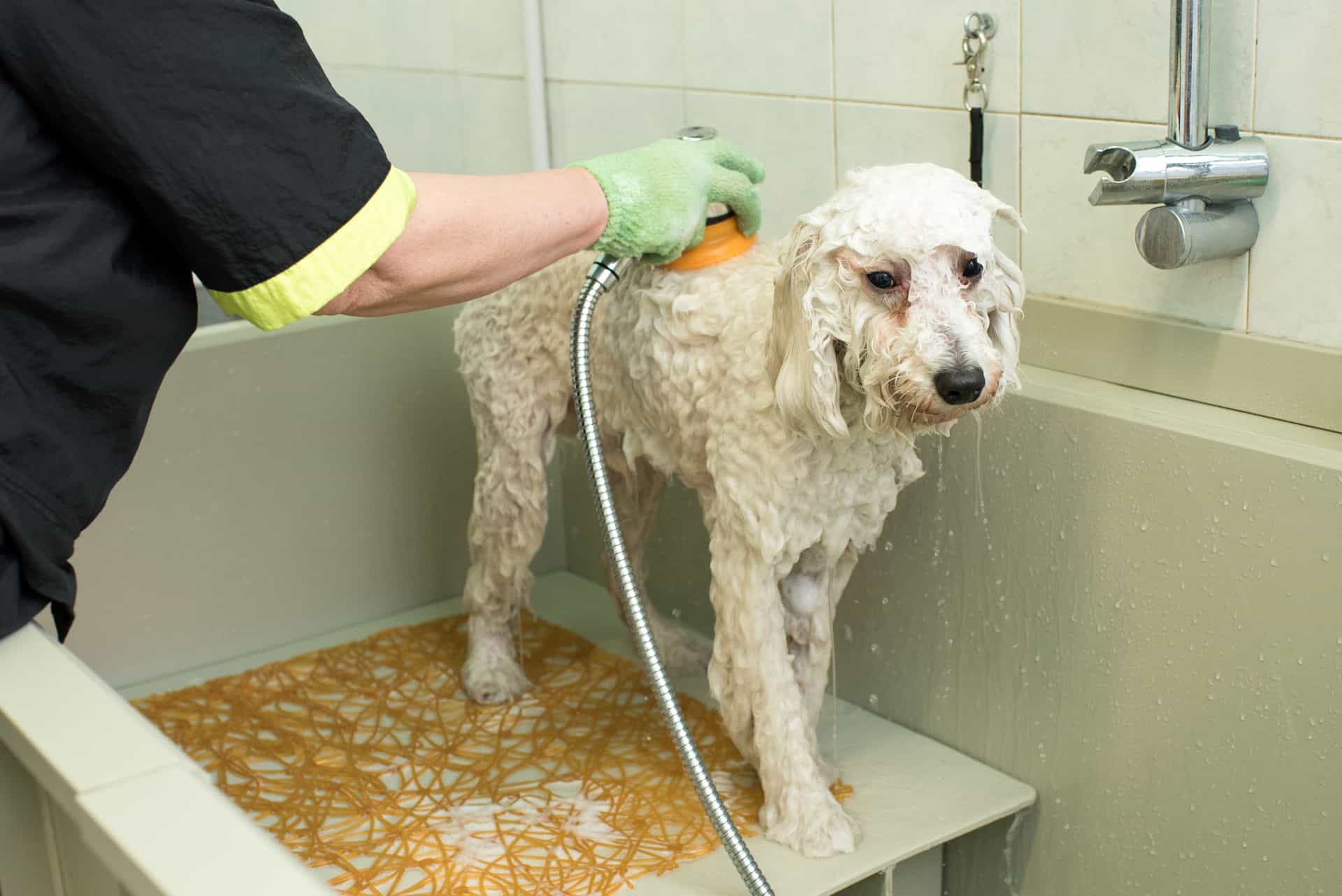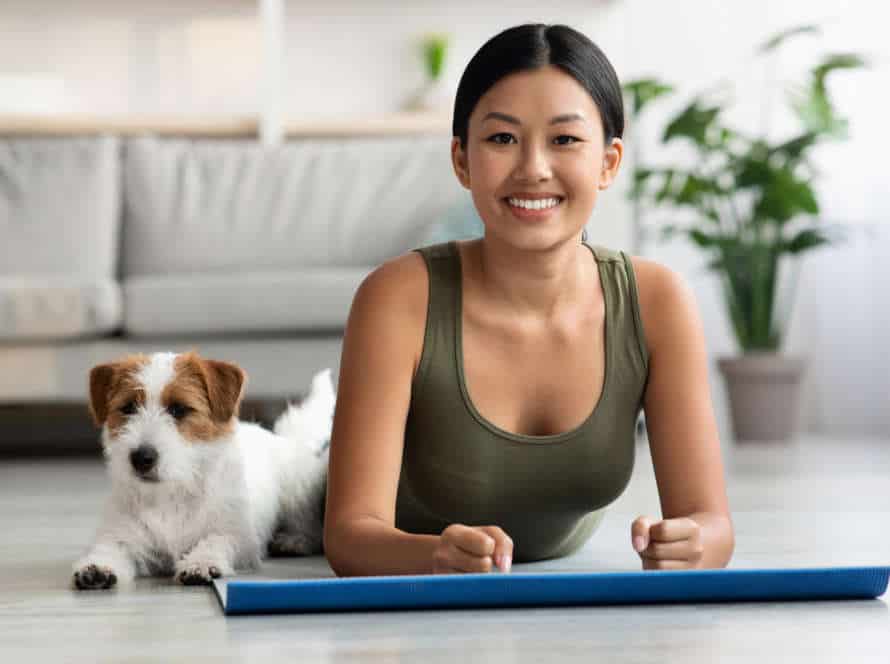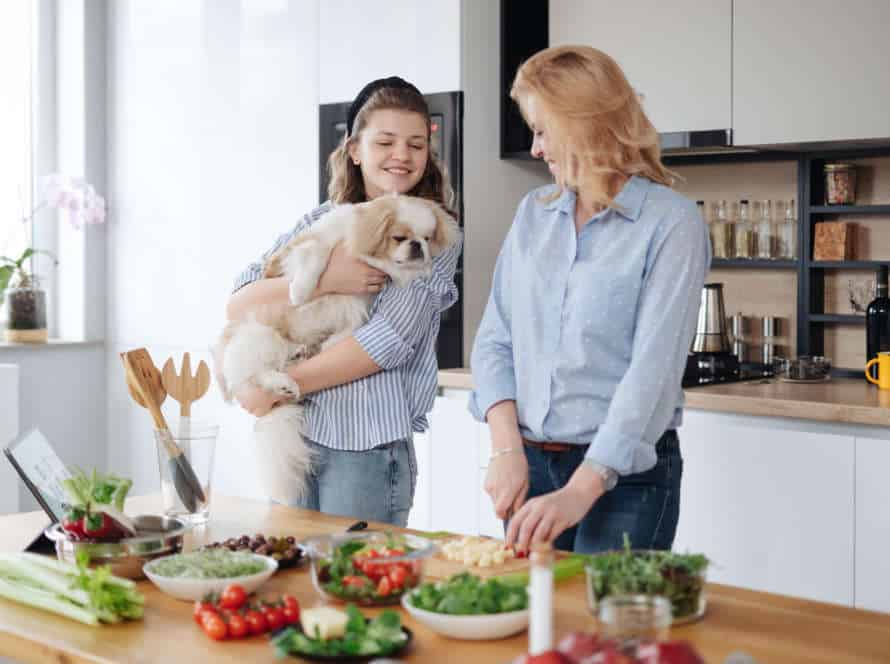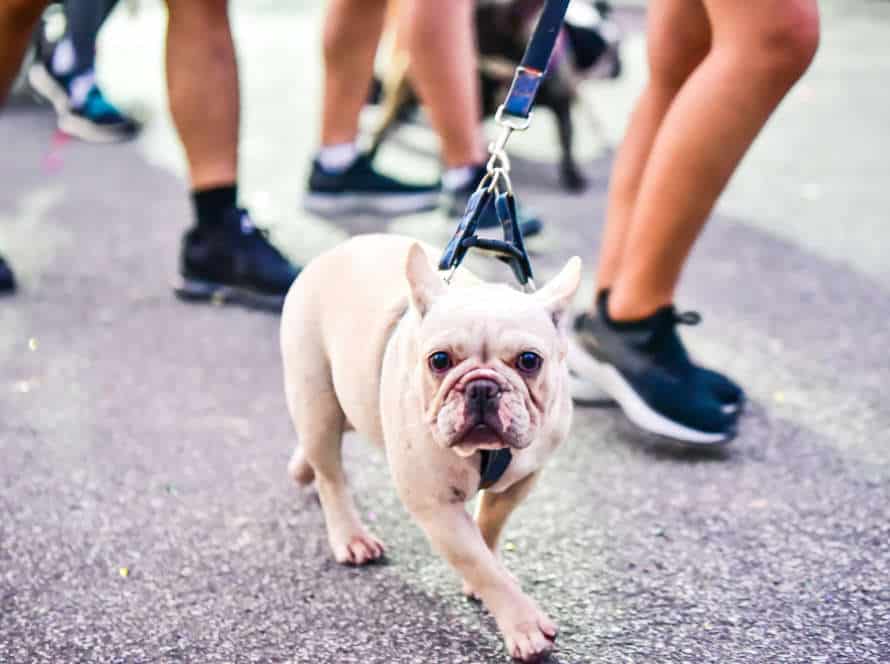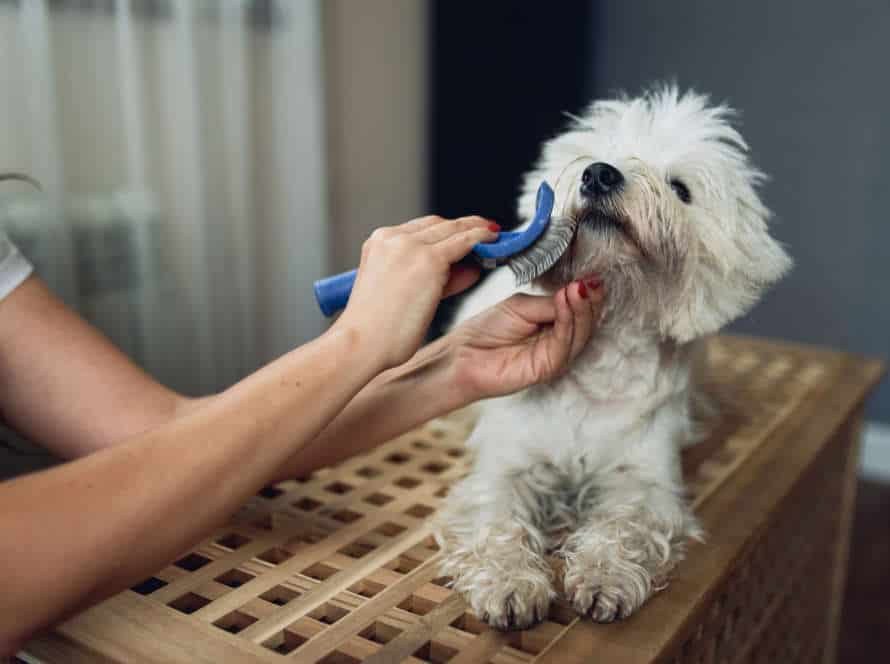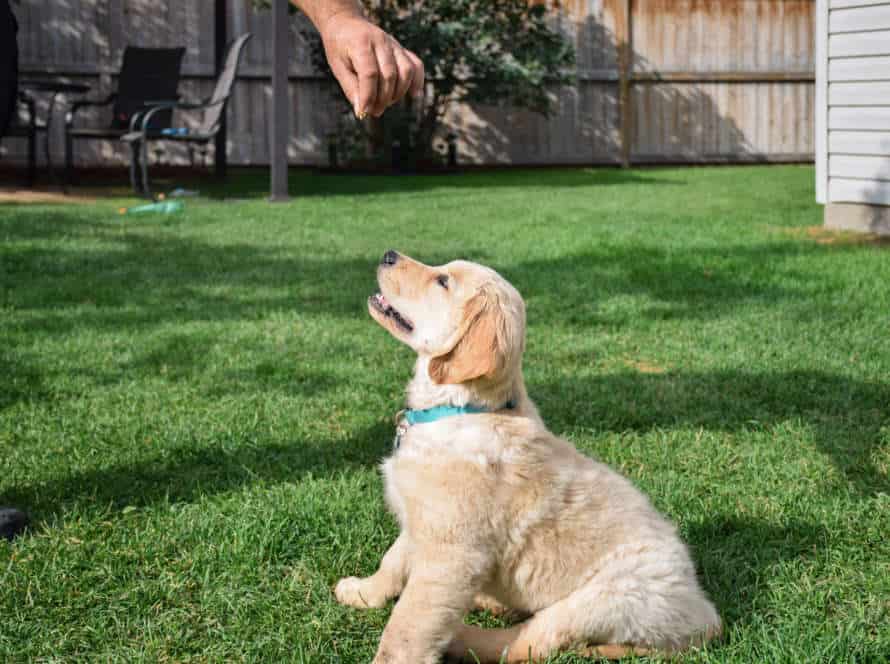Why Grooming your dog is important
Grooming your dog is super necessary! It helps keep them clean and healthy, as well as looking great! You can also check for parasites, like fleas and ticks. Plus, it can help reduce shedding and prevent the fur from matting. Last but not least, it’s a great way to bond with your pup!
Let’s go over the benefits of grooming adult dogs in more detail.
Benefits of regular grooming
Grooming your dog is essential for their health and happiness. It’s not just about making them look nice! Here are some benefits:
- Grooming maintains coat and skin health, preventing matting, tangling and skin irritations.
- You can check for bumps, cuts or lumps which can signal health issues.
- Grooming reduces shedding, which is common in many breeds.
- Clipping nails helps protect furniture and prevents discomfort or injury.
A grooming routine for adult dogs should include baths, brushing, ear cleaning, nail trimming and dental care. Starting early helps build a bond between you and your pet.
Establishing a bonding routine
Create a strong bond with your furry pal by having a routine grooming session. Brushing their fur helps remove dirt, spread oils, and keep them clean. Bathing is important to remove odors and keep their skin healthy. Nail trimming prevents painful ingrown nails. Cleaning their teeth prevents dental problems and bad breath. With regular grooming, not only will they look and feel better, but you’ll strengthen your friendship. Pro tip: Give them treats and praise to make them feel comfortable.
Early detection of health problems
Grooming your pup isn’t just about looks. It’s also a great way to detect potential health issues. By sticking to a grooming routine, you can spot any lumps, bumps, or fleas that might be signs of a bigger problem.
Here are the basics:
- Brush their coat often to prevent mats and skin problems.
- Check their ears for infections, irritation, or wax buildup.
- Trim their nails to avoid overgrowth.
- Regularly look out for fleas and ticks and use proper products to treat them.
- Bathe them every few weeks and keep an eye out for any changes in their skin or signs of irritation.
By being consistent with grooming, you can monitor your pup’s health and take action quickly if needed. Plus, while you groom, pay attention to their body language and be gentle.
Components of a Grooming Routine
Grooming your pet is essential! To keep their coat clean and healthy, there are a few steps. Brushing and bathing regularly. Plus, trimming nails and cleaning ears. A well-rounded routine helps your pup look and feel their best. Here’s what to do for an adult dog grooming routine:
- Brush your dog’s coat regularly to remove any dirt or debris and to prevent matting or tangling of their fur. This also helps distribute natural oils throughout their coat for a healthy shine.
- Bathe your dog every 4-6 weeks using a mild dog shampoo. Be sure to rinse thoroughly to avoid any leftover soap residue, which can irritate their skin.
- Trim your dog’s nails every 2-3 weeks to prevent them from getting too long and causing discomfort or difficulty walking. Be careful not to cut into the quick, which can cause bleeding and pain.
- Clean your dog’s ears weekly to prevent any buildup of wax or debris, which can lead to infection. Use a gentle ear cleaner and cotton ball to remove any dirt or buildup, and avoid inserting anything into their ear canal.
Brushing and combing
Brushing and combing are key to a perfect grooming routine for adult dogs. Brushing helps remove loose hair, dirt, and debris. It also spreads natural oils around the coat, for healthy skin and a glossy look. Plus, it releases endorphins that soothe and relax your dog.
Combing helps to get rid of tangles and mats. It also gives you a chance to check for lumps, bumps, or other skin problems.
The type of brush and comb you need to use depends on the breed, coat type, and length of your dog. Establish a regular grooming routine and use quality tools to keep your pup looking and feeling its best.
Bathing and drying
Bathing and drying are vital parts of grooming an adult dog. Here are some tips to do it right:
Bathing:
- Pick a shampoo that suits your pup’s coat and skin type.
- Wet your pup with lukewarm water and apply the shampoo, avoiding their eyes, ears, and mouth.
- Lather the shampoo over the pup’s body, massaging gently with your fingers.
- Rinse thoroughly with lukewarm water, making sure there’s no shampoo left.
Drying:
- Use a clean towel to dry your pup after the bath, removing as much water as possible.
- If your pup has long hair, use a hairdryer on a low heat setting to completely dry their coat.
- Brush their coat lightly to avoid tangles and matting while it’s still damp.
Pro tip: Always reward your pup with a treat and lots of love after grooming – it makes the experience positive and enjoyable for them.
Trimming hair and nails
Grooming an adult dog requires trimming hair and nails. This helps to keep their appearance, hygiene and health in check. Here are some tips to follow:
- Hair: Use scissors or clippers to trim their hair. Start at the neck and then go on the back and sides. Trim the hair near their ears, paws and tail. Get rid of any mats or tangles with a comb or dematting tool.
- Nails: Use a nail clipper or grinder to trim the nails. Hold their paw firmly and use sharp clippers to cut the nail below the quick. If the nails are dark, clip in small bits until you spot the quick. To smooth any rough edges use a nail file or grinder. Always reward your dog with treats and praise.
- Remember that each dog is different and might need special grooming. Consult a professional groomer or vet if unsure on how to trim your pet’s hair or nails.
How often should you groom your dog
Grooming your pup is vital! Get the lowdown on adult dog grooming. How often should you do it? What type of grooming? What to consider? This guide has it all to help you create the perfect grooming routine for your canine pal.
Different breeds have different grooming needs
Dog breeds vary in their grooming needs. Tailor a routine to your adult dog. Here are some tips:
- Brushing: Do it weekly for short-haired breeds, daily for long-haired.
- Bathing: Every 3 months, use doggy shampoo. Don’t overdo it!
- Nail Trimming: Every 4-6 weeks to avoid discomfort.
- Haircuts: Long-haired breeds need pro grooming every 4-6 weeks.
- Ears and Teeth: Check regularly. Clean ears with cotton balls. Clean teeth with pet toothbrush/paste.
Adjust the routine for your pup and lifestyle. Pro Tip: Reinforce with treats/praise to make it a pleasant experience.
Frequency depends on the age and activity level of the dog
Grooming your pup is a must for their health and well-being. How often they need grooming depends on factors like age and activity level. Here’s a guide for adult doggies:
- Bathing: Gotta bathe every 3 months, but for long-haired breeds like poodles – every 4-6 weeks.
- Brushing: Short-haired dogs – brush once a week. Long-haired – daily.
- Nail trim: Cut nails every 3-6 weeks. Hear ’em clicking on hard surfaces? Time for trim!
- Ear cleaning: Check ’em often and clean when needed. Long, floppy ears – more frequent cleaning.
- Teeth brushing: Brush teeth daily or at least twice a week. Keep plaque and gum disease away!
Remember, grooming isn’t just about looks – it’s essential for pup’s health and comfort.
The weather can also affect the frequency of grooming
Grooming your dog is vital for their health and hygiene. However, the grooming frequency changes based on the weather. In summer, more grooming may be needed as there is more sweating, shedding and possible skin irritations. But in winter, there is slower hair growth and less dirt and pollen exposure, so less grooming is needed. Generally, adult dogs should be groomed every 4-6 weeks. Pay attention to the climate in your area and to your dog’s needs to know how often to groom them. Remember to brush, clean ears and trim nails weekly or bi-weekly to keep your pup healthy and comfy.
Tools and Products for Grooming
When it comes to grooming an adult pup, there’s a variety of tools and products on offer. Brushes, shampoos, nail trimmers, and ear cleaners are some of the essentials. Finding the best product or tool for your doggo depends on their needs. Let’s explore the different tools and products available.
Types of brushes and combs
Brushes and combs are indispensable for keeping your adult dog’s fur healthy and shiny. They manage shedding and stop tangles and mats. Here’s a guide to the most common types and what they are used for:
- Bristle brush: Perfect for short-haired dogs. Removes loose fur, dirt, and debris.
- Slicker brush: For medium to long-haired dogs with mats and tangles. Thin, tightly-packed wires take out dead hair and prevent matting.
- Pin brush: Like a bristle brush but with longer pins. Ideal for loose or shedding hair on long-haired dogs. Gentle.
- Undercoat rake: Thick-coated breeds. Removes dead undercoat and helps stop shedding.
- Flea comb: Tightly-spaced teeth trap fleas and eggs close to the skin.
When grooming, check for anything abnormal, like lumps or hot spots.
Shampoos and conditioners
Shampoos & conditioners are essential grooming products for adult dogs to keep a healthy coat & skin. Human shampoos should be avoided; they can irritate the dog’s skin. Conditioners add moisture, prevent tangles & matting & soothe itchy & dry skin. When choosing a product, consider skin type, allergies & coat type. Select a pH balanced one for your pup. Follow the manufacturer’s instructions to avoid overusing & skin irritation, dryness, or greasiness. Regular use of quality shampoos & conditioners promote healthy skin & a shiny coat.
Clippers and scissors
To groom your adult dog, you need clippers and scissors. Clippers cut thick or matted hair, like on the belly, chest, and back. Get cordless ones for convenience. Scissors are more precise. Use them around the ears, paws, and face. Invest in high-quality clippers and scissors. Look for sharp blades and comfortable handles. Pick scissors with the right length and weight for your hand size.
Tips for making grooming a positive experience
Groom your pet! It’s essential. For looking great and feeling good, it’s a must. Good habits are key. Here’s how to make it a positive experience for both you and your pup:
Start grooming your dog at a young age
Beginning grooming your pup while they’re young is key to forming a positive grooming experience later in life. This’ll save you and your pup from fear, frustration and anxiety.
Here are some top tips:
- Start simple, like brushing or nail clipping and gradually increase difficulty.
- Use treats or praise to reward good behavior.
- Get the right grooming tools for your pup’s size and coat.
- Take breaks and be patient to keep them stress-free.
By grooming your pup early on, you’ll form a trusting bond that’ll be beneficial for both of you.
Make grooming a relaxing and positive experience
Grooming can be hard on dogs. But, it doesn’t have to be! Here are some tips to make it a positive experience:
- Start young! Get your pup used to grooming early on.
- Keep it chill: Choose a quiet spot for grooming.
- Praise and reward: Give treats, toys and compliments for good behavior.
- Desensitize: Introduce grooming tools slowly and increase use over time.
- Start simple: Brush first and then move on to tougher tasks.
- Be gentle: Use the right tools and techniques to prevent harm.
By following these tips, grooming can be stress-free and enjoyable! Plus, don’t forget to reward your pup with praise and a special treat afterwards.
Reward your dog with treats and praise
Reward your pup with treats and compliments to make grooming more enjoyable! Here’s how:
- Have a good attitude when around your doggo, they can sense if you’re anxious or mad.
- Reinforce good behaviour with treats and compliments.
- Let your pup get used to the grooming tools slowly.
- Never ever punish them while grooming, it’ll just scare them.
- Take breaks and give them rewards throughout.
- Finish each grooming session with lots of treats and praise.
Grooming can be an awesome bonding experience if you use the right attitude! Pro Tip: Grooming regularly will help your pup look and smell great, plus it can stop infections and inflammation.
Common Grooming mistakes to avoid
Groom your grown-up pup? Absolutely! It’s a must to keep them healthy and content. But, oh no, there are some typical errors humans make when grooming their dogs. Here’s an all-encompassing guide. We’ll discuss the most frequent grooming mistakes. Avoid these blunders and keep your dog looking and feeling delightful!
Cutting the quick of the nail
Be careful when trimming your pup’s nails! Cutting the quick – the pink or red tissue inside the nail – can be painful and cause bleeding. Heed these tips to avoid this mistake:
- Identify the quick beforehand.
- Use a sharp clipper that fits the nail size.
- Cut small amounts. Stop if you see a pale oval or white dot.
- File the edges to make them smooth.
Don’t forget to reward your dog with treats and praise after every grooming session – positive reinforcement will make it a pleasant experience for them.
Using the wrong grooming tool for your dog’s coat type
Incorrect grooming tools for your dog’s coat type is a common error. This can cause discomfort, skin irritation and even harm. Identify your pup’s coat type and pick the appropriate grooming tool.
Here are some coat types and their best suited grooming tools:
- Short-haired: Use a bristle brush or rubber curry brush for light grooming. For shedding, use a shedding blade.
- Medium-haired: Slicker brush, wide-tooth comb and a set of scissors for trimming and de-matting.
- Long-haired: Pin brush or slicker brush, steel comb, and de-matting tool to tackle tangles and knots.
Pro Tip: Opt for high-quality grooming tools. Check out instructional videos or tutorials to learn how to take care of your doggy’s coat properly.
Not properly rinsing shampoo and conditioner off the coat.
Not rinsing off shampoo and conditioner properly after bathing your pup can result in some less-than-ideal grooming issues – like skin irritation, bad smells, and matted fur. To ensure a proper rinse, follow these steps:
- Use warm water to rinse off the shampoo and conditioner completely – double check for any residue.
- Part the coat and run your fingers through the fur to get rid of all traces.
- Rinse the pup’s coat with fresh water until the water runs clear and no soap suds remain.
- Gently squeeze out the extra water and towel dry.
Doing this will keep your pup clean and healthy, plus your grooming experience will be stress-free!
Frequently Asked Questions
Q: How often should I groom my adult dog?
A: It depends on the breed and coat type of your dog. Dogs with longer hair and thicker coats may require daily grooming, while those with shorter hair may only require grooming once or twice a week.
Q: What tools do I need to groom my dog at home?
A: You will need a comb, brush, clippers, scissors, nail clippers, and shampoo specifically designed for dogs.
Q: How do I remove tangles and mats from my dog’s coat?
A: First, use a dematting tool or brush to loosen the mat. Then, use scissors or clippers to gently cut out the mat. Be extremely careful not to cut your dog’s skin.
Q: Should I trim my dog’s nails myself?
A: It’s possible to trim your dog’s nails at home, but it’s important to be very careful not to cut the quick (the pink part of the nail with blood vessels). If you’re uncomfortable trimming your dog’s nails at home, you can take them to a groomer or vet to have them trimmed professionally.
Q: How can I keep my dog’s ears clean?
A: Gently wipe your dog’s ears with a damp cloth or cotton ball. Be sure to dry their ears thoroughly with a clean cloth to prevent infections.
Q: How can I prevent my dog from getting fleas?
A: You can prevent fleas by using flea and tick prevention medication prescribed by your vet, regularly washing your dog and their bedding, vacuuming your home frequently, and keeping your yard clean and free of debris.

